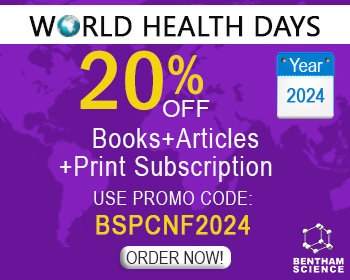Abstract
Nanoparticles (NPs), due to their medical applications, are widely used. Accordingly, the use of mesenchymal stem cells is one of the most important alternatives in the tissue engineering field. NPs play effective roles in stem cells proliferation and differentiation. The combination of NPs and tissue regeneration by stem cells has created a new therapeutic approach towards humanity. Of note, the physicochemical properties of NPs determine their biological function. Interestingly, various mechanisms such as modulation of signaling pathways and generation of reactive oxygen species, are involved in NPs-induced cellular proliferation and differentiation. This review summarized the types of nanomaterials effective on stem cell differentiation, the physicochemical features, biomedical application of these materials and the relationship between nanomaterials and environment.
Keywords: Nanoparticles, Mesenchymal stem cells, Tissue regeneration, Cell differentiation, Biomedical application, Nanomaterials.
[http://dx.doi.org/10.1021/ar960016n] [PMID: 11308299]
[http://dx.doi.org/10.2147/IJN.S146195] [PMID: 29520143]
[http://dx.doi.org/10.3390/nano8100761] [PMID: 30261637]
[http://dx.doi.org/10.1002/adma.200703183]
[http://dx.doi.org/10.1016/j.phrs.2010.01.009] [PMID: 20097288]
[http://dx.doi.org/10.1186/s12951-017-0310-5] [PMID: 29065876]
[PMID: 22619557]
[http://dx.doi.org/10.1002/mabi.201300407] [PMID: 24327549]
[http://dx.doi.org/10.1016/B978-0-12-397157-9.00020-5]
[PMID: 6875460]
[http://dx.doi.org/10.1038/nprot.2007.418] [PMID: 18079707]
[http://dx.doi.org/10.1038/nbt1374] [PMID: 18059259]
[http://dx.doi.org/10.1126/science.1172482] [PMID: 19325077]
[http://dx.doi.org/10.1161/CIRCRESAHA.111.243147] [PMID: 21960725]
[http://dx.doi.org/10.1073/pnas.0903201106] [PMID: 19666564]
[http://dx.doi.org/10.1016/j.colsurfb.2015.07.019] [PMID: 26209968]
[http://dx.doi.org/10.1016/j.jphotobiol.2018.12.022] [PMID: 30682654]
[http://dx.doi.org/10.1002/stem.1000] [PMID: 22131096]
[http://dx.doi.org/10.1021/nn202190c] [PMID: 21793541]
[http://dx.doi.org/10.1634/stemcells.2005-0014] [PMID: 16210408]
[http://dx.doi.org/10.1016/j.coi.2006.07.004] [PMID: 16879957]
[http://dx.doi.org/10.1634/stemcells.2007-0197] [PMID: 17656645]
[http://dx.doi.org/10.1016/j.cytogfr.2009.10.002] [PMID: 19926330]
[http://dx.doi.org/10.4062/biomolther.2017.260] [PMID: 29902862]
[http://dx.doi.org/10.1186/s12931-017-0620-z] [PMID: 28701189]
[http://dx.doi.org/10.1016/j.mvr.2012.02.011] [PMID: 22391452]
[http://dx.doi.org/10.5966/sctm.2011-0018] [PMID: 23197761]
[http://dx.doi.org/10.1038/nm1394] [PMID: 16582915]
[http://dx.doi.org/10.1016/j.athoracsur.2009.10.035]
[http://dx.doi.org/10.1563/AAID-JOI-D-12-00027] [PMID: 23964777]
[http://dx.doi.org/10.1007/s11064-006-9212-x] [PMID: 17191131]
[http://dx.doi.org/10.1155/2019/3945672]
[http://dx.doi.org/10.1186/s13018-017-0534-y] [PMID: 28279182]
[http://dx.doi.org/10.1021/acschemneuro.0c00052] [PMID: 32310632]
[http://dx.doi.org/10.2217/17435889.1.2.229]
[http://dx.doi.org/10.1016/j.taap.2011.11.010] [PMID: 22178382]
[http://dx.doi.org/10.1186/1743-8977-7-39] [PMID: 21126379]
[http://dx.doi.org/10.1007/978-3-319-48009-1_2]
[http://dx.doi.org/10.2217/nnm.14.225] [PMID: 25816883]
[http://dx.doi.org/10.1002/smll.201100001]
[http://dx.doi.org/10.2217/nnm-2017-0001] [PMID: 28520507]
[http://dx.doi.org/10.1021/acs.nanolett.5b04033] [PMID: 26674672]
[http://dx.doi.org/10.3390/nano8060396] [PMID: 29865197]
[http://dx.doi.org/10.1161/CIRCRESAHA.115.308056] [PMID: 26838794]
[http://dx.doi.org/10.1016/j.jcis.2014.08.058] [PMID: 25454427]
[PMID: 26185441]
[http://dx.doi.org/10.1016/j.msec.2014.04.042] [PMID: 25063094]
[http://dx.doi.org/10.4061/2010/218142] [PMID: 21350642]
[http://dx.doi.org/10.2217/nnm.12.18] [PMID: 22583572]
[http://dx.doi.org/10.1166/jbn.2016.2182] [PMID: 27280250]
[http://dx.doi.org/10.3762/bjnano.5.214] [PMID: 25551033]
[http://dx.doi.org/10.1016/j.nano.2015.07.016] [PMID: 26282383]
[http://dx.doi.org/10.1016/j.biomaterials.2013.07.004] [PMID: 23870854]
[PMID: 19582246]
[http://dx.doi.org/10.1034/j.1600-0501.2003.00950.x] [PMID: 12969355]
[http://dx.doi.org/10.1016/j.biomaterials.2009.12.054] [PMID: 20071024]
[http://dx.doi.org/10.1039/b908196h] [PMID: 20023767]
[http://dx.doi.org/10.1073/pnas.0813200106] [PMID: 19179282]
[http://dx.doi.org/10.1021/nl070678d] [PMID: 17503870]
[PMID: 23814578]
[http://dx.doi.org/10.1016/j.biomaterials.2014.11.002] [PMID: 25468371]
[http://dx.doi.org/10.1021/nn2023057] [PMID: 21819114]
[http://dx.doi.org/10.1088/0957-4484/24/36/365102] [PMID: 23959974]
[http://dx.doi.org/10.1002/jbm.a.35180] [PMID: 24665062]
[http://dx.doi.org/10.1002/jbm.a.35397] [PMID: 25611196]
[http://dx.doi.org/10.1039/c3tb21002b] [PMID: 24098854]
[http://dx.doi.org/10.1177/2041731415575870] [PMID: 26090086]
[http://dx.doi.org/10.1177/2041731413515670] [PMID: 24555011]
[http://dx.doi.org/10.2217/nnm.12.204] [PMID: 23530764]
[http://dx.doi.org/10.1016/j.addr.2010.03.001] [PMID: 20214939]
[http://dx.doi.org/10.1021/nl073300o] [PMID: 18624387]
[http://dx.doi.org/10.1002/jbm.a.34400] [PMID: 23008178]
[http://dx.doi.org/10.1016/j.biomaterials.2012.05.032] [PMID: 22681974]
[http://dx.doi.org/10.1021/nl204064s] [PMID: 22432413]
[http://dx.doi.org/10.1021/ar300039j] [PMID: 22786674]
[http://dx.doi.org/10.1166/jbn.2014.1824] [PMID: 24804548]
[http://dx.doi.org/10.1021/nl070363y] [PMID: 17465586]
[http://dx.doi.org/10.1126/science.1114397]
[http://dx.doi.org/10.1039/C5NR08808A] [PMID: 27010117]
[http://dx.doi.org/10.1088/1748-6041/5/6/062001] [PMID: 20924139]
[http://dx.doi.org/10.1016/j.biomaterials.2015.03.001] [PMID: 25858865]
[http://dx.doi.org/10.1021/nn700256c] [PMID: 19206551]
[http://dx.doi.org/10.1021/nl101140t] [PMID: 20533851]
[http://dx.doi.org/10.1021/ar600012y] [PMID: 17474708]
[http://dx.doi.org/10.1021/nn101373r] [PMID: 21028783]
[http://dx.doi.org/10.1002/jcb.22303] [PMID: 19708027]
[http://dx.doi.org/10.1016/j.cell.2006.07.024]
[http://dx.doi.org/10.1007/s10856-008-3566-3] [PMID: 18758917]
[PMID: 20014009]
[http://dx.doi.org/10.1016/S0735-1097(03)00081-0] [PMID: 12628737]
[http://dx.doi.org/10.1111/boc.201100091] [PMID: 22304470]
[http://dx.doi.org/10.1126/science.8303295] [PMID: 8303295]
[http://dx.doi.org/10.1002/stem.81] [PMID: 19544460]
[http://dx.doi.org/10.3390/ijms13033847] [PMID: 22489186]
[http://dx.doi.org/10.2217/17435889.3.4.567]
[http://dx.doi.org/10.2741/4016] [PMID: 22201833]
[http://dx.doi.org/10.3390/ijms11031070] [PMID: 20480000]
[http://dx.doi.org/10.1126/science.281.5385.2013]
[http://dx.doi.org/10.1126/science.281.5385.2016] [PMID: 9748158]
[http://dx.doi.org/10.3402/nano.v1i0.5161] [PMID: 22110865]
[http://dx.doi.org/10.1038/nmat1390] [PMID: 15928695]
[http://dx.doi.org/10.1038/nbt767] [PMID: 12459736]
[http://dx.doi.org/10.1021/nl0347334] [PMID: 28890669]
[http://dx.doi.org/10.1126/science.1104274]
[http://dx.doi.org/10.1016/j.copbio.2004.11.003] [PMID: 15722017]
[http://dx.doi.org/10.1021/nl048715d]
[http://dx.doi.org/10.1021/nl0709930] [PMID: 17663586]
[http://dx.doi.org/10.1021/nl071547f] [PMID: 17887799]
[http://dx.doi.org/10.1007/978-1-60761-901-7_4]
[http://dx.doi.org/10.1016/j.biomaterials.2015.02.090] [PMID: 25890725]
[http://dx.doi.org/10.1016/j.nantod.2013.04.007] [PMID: 23997809]
[http://dx.doi.org/10.1002/adma.201104763] [PMID: 22378538]
[http://dx.doi.org/10.1016/j.addr.2008.03.012] [PMID: 18514969]
[http://dx.doi.org/10.1039/B600562B] [PMID: 17057833]
[http://dx.doi.org/10.1016/0021-9797(68)90272-5]
[http://dx.doi.org/10.1016/0166-6622(89)80107-6]
[http://dx.doi.org/10.1016/0927-7757(95)03117-V]
[http://dx.doi.org/10.1155/2016/7920358]
[http://dx.doi.org/10.1016/j.biomaterials.2004.10.012]
[http://dx.doi.org/10.1039/D0SC01926G] [PMID: 34123125]
[http://dx.doi.org/10.2147/IJN.S16354] [PMID: 21499430]
[http://dx.doi.org/10.1021/nn302042y] [PMID: 22681633]
[http://dx.doi.org/10.5935/0103-5053.20140064]
[http://dx.doi.org/10.1021/ja071471p] [PMID: 17530850]
[http://dx.doi.org/10.1016/j.nano.2009.07.009] [PMID: 19699322]
[http://dx.doi.org/10.1002/wnan.42] [PMID: 20049803]
[http://dx.doi.org/10.1146/annurev-bioeng-071910-124724] [PMID: 21529162]
[http://dx.doi.org/10.1039/c2an35054h] [PMID: 22569135]
[http://dx.doi.org/10.1186/1477-3155-9-55] [PMID: 22123084]
[http://dx.doi.org/10.3390/pharmaceutics5020294] [PMID: 24300452]
[http://dx.doi.org/10.1021/mp060132k] [PMID: 17708653]
[http://dx.doi.org/10.1021/nn200007z] [PMID: 21462992]
[http://dx.doi.org/10.2217/nnm.12.176] [PMID: 23514434]
[http://dx.doi.org/10.1039/c0nr00080a] [PMID: 20648292]
[http://dx.doi.org/10.1016/j.biomaterials.2013.07.015] [PMID: 23876760]
[http://dx.doi.org/10.1021/acsomega.7b00045] [PMID: 30023637]
[http://dx.doi.org/10.3390/ijms18010120] [PMID: 28075405]
[http://dx.doi.org/10.1039/C6RA09050H]
[http://dx.doi.org/10.1007/s12645-013-0040-9] [PMID: 26069504]
[http://dx.doi.org/10.1038/s41598-018-21331-y] [PMID: 29440698]
[http://dx.doi.org/10.1088/0957-4484/23/45/455103] [PMID: 23064012]
[http://dx.doi.org/10.1016/j.nano.2011.04.011] [PMID: 21664489]
[http://dx.doi.org/10.1016/j.nano.2010.10.001] [PMID: 21034861]
[http://dx.doi.org/10.2217/nnm.10.85] [PMID: 21039194]
[http://dx.doi.org/10.1016/j.jphotochem.2009.03.009]
[http://dx.doi.org/10.2217/17435889.3.3.329]
[http://dx.doi.org/10.1021/pr0504079] [PMID: 16602699]
[http://dx.doi.org/10.1007/s00253-009-2159-5] [PMID: 19669753]
[PMID: 24235826]
[http://dx.doi.org/10.1016/j.trac.2014.09.010]
[http://dx.doi.org/10.1016/j.theriogenology.2020.12.006] [PMID: 33340755]
[http://dx.doi.org/10.1016/j.colsurfb.2012.01.046] [PMID: 22348987]
[http://dx.doi.org/10.1021/nl052326h] [PMID: 16608300]
[http://dx.doi.org/10.1016/j.freeradbiomed.2011.08.025] [PMID: 21920432]
[http://dx.doi.org/10.1021/la104825u] [PMID: 21401066]
[http://dx.doi.org/10.1016/j.apcatb.2008.03.007]
[http://dx.doi.org/10.1016/j.nano.2008.09.004] [PMID: 19223243]
[http://dx.doi.org/10.1021/am301153j] [PMID: 23020183]
[http://dx.doi.org/10.1088/0957-4484/18/37/375709]
[http://dx.doi.org/10.1093/toxsci/kfu202] [PMID: 25260831]
[http://dx.doi.org/10.1007/s00011-012-0512-0] [PMID: 22752115]
[http://dx.doi.org/10.1002/cmdc.200900049]
[http://dx.doi.org/10.1097/01.BCR.0000216741.21433.66] [PMID: 16679897]
[http://dx.doi.org/10.1016/j.colsurfb.2014.08.018] [PMID: 25174985]
[http://dx.doi.org/10.2217/nnm.12.205] [PMID: 23427863]
[http://dx.doi.org/10.3390/ijms15022015] [PMID: 24477262]
[http://dx.doi.org/10.1097/ICO.0000000000000144] [PMID: 24886997]
[http://dx.doi.org/10.1016/j.biomaterials.2010.11.030] [PMID: 21145587]
[http://dx.doi.org/10.1016/j.nano.2011.09.003] [PMID: 21945900]
[http://dx.doi.org/10.1016/j.nano.2014.02.007] [PMID: 24566275]
[http://dx.doi.org/10.1016/j.cbpc.2018.02.001] [PMID: 29408432]
[http://dx.doi.org/10.1007/s13369-012-0324-0]
[http://dx.doi.org/10.4172/2157-7439.1000175]
[http://dx.doi.org/10.1002/sctm.19-0340] [PMID: 32725800]



























